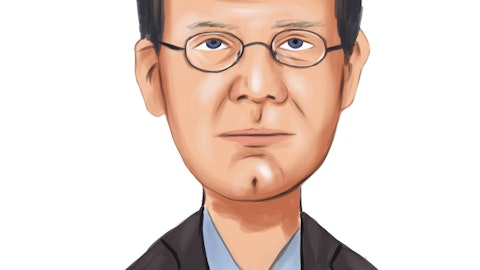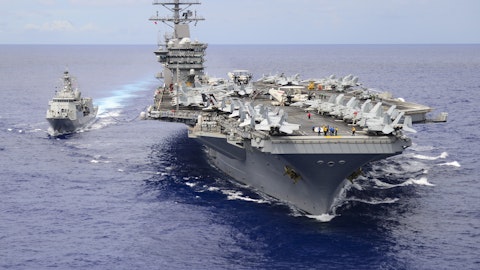It’s hard to argue that a lot of companies during the 4th quarter of 2020 was focused on generating positive free cash flow. If a company’s free cash flow is extraordinary, that means its liquid assets are improving. A company’s free cash flow enables it to settle debts, pay its expenses, and give spectacular returns to its shareholders while also having the capability to reinvest in its business.
Raytheon Technologies Corporation’s CEO, Greg Hayes has this to say regarding their Q4 2020 results and their free cash flow: “It’s a focus. We started out back in April when we saw this pandemic unfold and said, ‘We got to do something dramatic’, so we took $4 billion of cost or cash actions on top of $2 billion of cross-actions, and frankly, our guys over-delivered,”. Hayes said they actually accumulated over $4.7 billion of cash reduction actions from reduced CapEx, reduced people cost, as well as improved collections from their customers.
Raytheon Technologies Corporation (NYSE: RTX) is an electronics and propulsion company that currently has a $107.1 billion market capitalization. It was able to deliver a 21.11% return in the past 3 months and settled at $70.58 per share at the closing of February 3. The company is known for its commendable research and development programs regarding state-of-the-art technology products in the aerospace and defense industry. It successfully went beyond its estimated EPS of $0.70 and otherwise achieved $0.74. The same is true with its estimated revenue of $16.24 billion but successfully ended up at $16.42 billion.

“We ended the year in the 4th quarter with $750 million of free cash flow, and that was after making $800 million pension contributions which we were scheduled to do in 2021. So it’s really a solid year”. Hayes said that they were able to reach and go above their target results for 2020, and that’s why they leveled up their targets for 2021. “As we think about 2021, we’re just going to double free cash flow and it should be at least $4.5 billion. I think the focus on cash flow was important, the guys rallied around it and got it done.”.
Talking about having enough ‘left-over’ to do a substantial buyback for shareholders, Hayes responded by saying, “We got great liquidity. If we ended the year (2020) with about $9 billion of cash on the balance sheet,– We’re sitting on about $10 billion of cash. We’re going to start out soon with a share buyback. I would expect we would be doing that if not later this week, then next week”. He stated that the company will allocate $1.5 billion for share buyback this year and try to be opportunistic in every chance they get. “We got flexibility. We don’t need all that cash on the balance sheet and we got very few debts,– We’re going to try and load up to share buyback because we see this as a great value and great opportunity,”. Accordingly, the company has about over $500 million debt redemption this year and $3 billion in dividends. “What we wanted to do strategically is to create an aerospace and defense. There was a 100% focus on that market place.– Diversification, if you want it, you can buy the S&P 500. If you want focus, you can buy individual stocks. That’s really what the strategy was all about.”
Speaking about commercial aviation, Hayes’ thoughts of true recovery is not going to be abrupt, rather gradual. He said that gradual recovery will first be achieved by the domestic markets and then the international. “If you think about it, domestic travel is down about 50%, international travel is down about 75%. The 1st recovery is when the vaccines became available and you’re going to see that in the United States. You’re going to see a gradual recovery into the 2nd, 3rd, and 4th quarter of this year. Probably not back to normal levels of domestic travel we think until late next year when the vaccine is fully available. Probably by 2024 before we see a full recovery of the international traffic.”, marked Hayes.
“Space is one of those unique areas where we’re going to continue to see growth for the next 5 to 10 years.”. Greg Hayes said that this is a legacy Raytheon business in terms of their communications and sensing capabilities, that is the ability of satellites to monitor what is going on the ground and also to process the data coming off those satellites. “We see a lot of growth. In fact, we just close on an acquisition of Blue Canyon Technologies, which is a small satellite company. It gives us the ability to give a complete solution to our customers for low Earth orbit satellite, which we see huge growth there,”. He also emphasized the many threats in terms of ways to disable their satellites which according to Hayes, can be a good growth prospect in space because this opens the need for redundant or replenishable systems to put up at moments that they will lose a satellite. Hayes concluded by saying, “We’ve got a great position there with our sensing ability– and I see that as a big growth opportunity.”.





